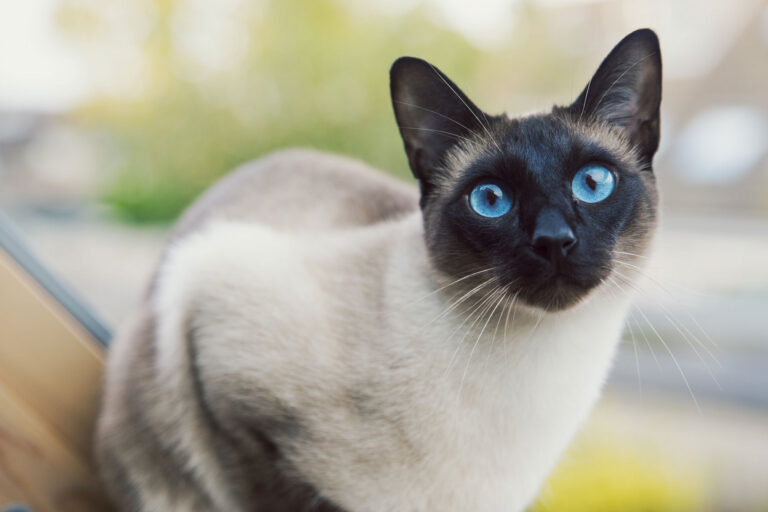What Are the Pros, Cons, and Safety Considerations of Indoor vs. Outdoor Cats?

The decision to keep your cat indoors or allow outdoor access is one that many cat owners grapple with. Each option comes with its own set of advantages, disadvantages, and safety considerations. In this comprehensive guide, we’ll explore the pros, cons, and safety considerations of indoor vs. outdoor cats, helping you make an informed decision that prioritizes the well-being of your feline friend.
1. Pros of Indoor Cats:
Keeping your cat indoors offers several benefits, including protection from outdoor dangers such as traffic, predators, and diseases. Indoor cats are also less likely to get into fights with other animals or be exposed to harmful substances. Additionally, indoor cats are generally safer from accidents, such as getting lost or injured.
When considering the choice between Indoor vs Outdoor Cats, it’s essential to acknowledge the peace of mind that comes with knowing your cat is safe and secure indoors. Indoor cats also tend to live longer than outdoor cats, as they are less exposed to environmental hazards.
2. Cons of Indoor Cats:
Despite the advantages, there are also drawbacks to keeping your cat strictly indoors. Indoor cats may miss out on the stimulation and exercise that outdoor exploration provides, which can lead to boredom, obesity, and behavioral issues. Additionally, some indoor cats may exhibit pent-up energy or frustration if they don’t have sufficient opportunities for physical and mental stimulation.
In the debate over Indoor vs Outdoor Cats, it’s essential to consider the potential challenges of keeping your cat exclusively indoors. Providing enrichment activities, such as interactive toys, scratching posts, and vertical space, can help alleviate boredom and provide mental stimulation for indoor cats.
3. Safety Considerations for Outdoor Cats:
Allowing your cat outdoor access exposes them to various risks, including traffic accidents, encounters with aggressive animals, and exposure to toxins or infectious diseases. Outdoor cats are also more vulnerable to getting lost or stolen, especially in urban areas with busy streets or high population densities.
When contemplating Indoor vs Outdoor Cats, it’s crucial to prioritize the safety of outdoor cats. Taking preventive measures, such as ensuring your cat is microchipped, vaccinated, and spayed or neutered, can help mitigate some of the risks associated with outdoor living. Additionally, providing a secure outdoor enclosure or supervised outdoor time can offer the benefits of outdoor exploration while minimizing potential dangers.
4. Pros of Outdoor Cats:
Outdoor cats enjoy the freedom to roam and explore their surroundings, which can provide mental and physical stimulation. Outdoor exploration allows cats to exhibit natural behaviors, such as hunting, climbing, and sunbathing, which can contribute to their overall well-being. Additionally, outdoor cats may have access to a more varied diet, including opportunities to hunt for prey.
In the discussion of Indoor vs Outdoor Cats, it’s essential to recognize the benefits of outdoor living for some feline companions. Outdoor cats often exhibit greater independence and confidence, as they have the opportunity to navigate and explore their environment freely.
5. Cons of Outdoor Cats:
Despite the allure of outdoor freedom, outdoor cats face numerous hazards and risks. Traffic accidents, predatory animals, and confrontations with other cats are common dangers that outdoor cats may encounter. Outdoor cats are also at risk of contracting infectious diseases, such as feline leukemia virus (FeLV) or feline immunodeficiency virus (FIV), from contact with other cats.
When considering the drawbacks of Indoor vs Outdoor Cats, it’s essential to weigh the potential dangers of outdoor living against the benefits of freedom and exploration. Outdoor cats may also face environmental threats, such as extreme weather conditions, pesticides, or toxic plants, which can pose additional risks to their health and safety.
6. Compromise Solutions:
For cat owners who are hesitant to keep their cats strictly indoors or allow unrestricted outdoor access, compromise solutions may offer a middle ground. Installing a cat enclosure or “Catio” provides outdoor enrichment and stimulation while keeping cats safely contained. Supervised outdoor time on a leash or harness allows cats to explore under controlled conditions, reducing the risk of accidents or injuries.
When navigating the debate over Indoor vs Outdoor Cats, compromise solutions can provide the best of both worlds for cats and their owners. These solutions offer opportunities for outdoor exploration and stimulation while minimizing the inherent risks of outdoor living.
7. Making an Informed Decision:
Ultimately, the decision of whether to keep your cat indoors or allow outdoor access depends on various factors, including your cat’s personality, lifestyle, and environment. It’s essential to weigh the pros, cons, and safety considerations of each option carefully and consider what is best for your individual cat’s well-being.
In the ongoing discussion of Indoor vs Outdoor Cats, making an informed decision requires thoughtful consideration and evaluation of your cat’s needs and preferences. Whether you choose to keep your cat strictly indoors, allow outdoor access with precautions, or implement compromise solutions, prioritize the safety and happiness of your feline companion above all else.
Choosing whether to keep your cat indoors or allow outdoor access is a significant decision that requires careful consideration of the pros, cons, and safety considerations involved. By weighing the benefits and risks of each option and considering your cat’s individual needs and personality, you can make an informed decision that prioritizes their well-being. Whether you opt for indoor living, outdoor exploration, or a compromise solution, the key is to provide a safe, enriching environment that supports your cat’s physical and emotional health.

Dr. Lorie Wiltse’s path to veterinary medicine was marked by a great desire for excellence and a dedication to advance the profession of neurology.
Subscribe my Newsletter for new blog posts. Stay updated from your inbox!









